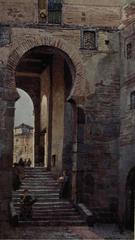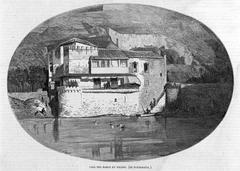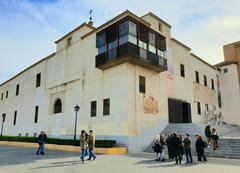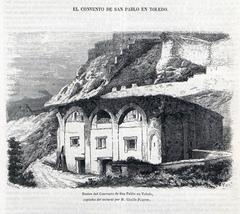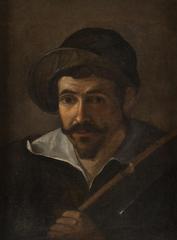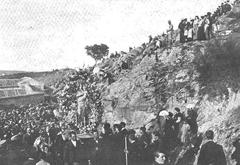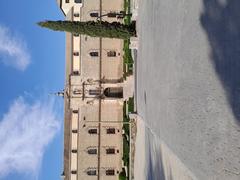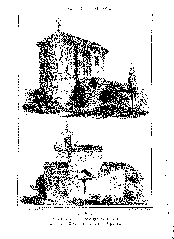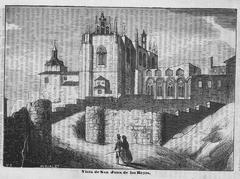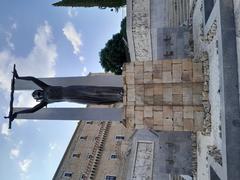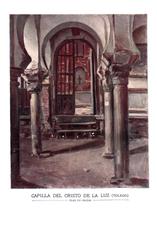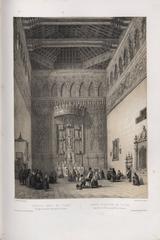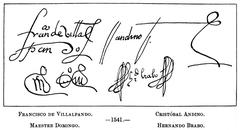Maternidad Provincial Toledo: Visiting Hours, Tickets, and Historical Site Guide
Date: 14/06/2025
Introduction
The Maternidad Provincial of Toledo—often called the “Antigua Maternidad”—is a landmark deeply woven into the city’s architectural and social fabric. Originally established as a maternity hospital and foundling home, this institution reflects Toledo’s evolution as a center for social welfare and cultural convergence. Its architectural features, historical trajectory, and ongoing influence in the community make it an essential stop for anyone interested in Toledo’s rich legacy (inlovemag.com).
This comprehensive guide details everything you need to know before visiting the Maternidad Provincial: its history, architecture, visitor information, accessibility, nearby attractions, and practical travel tips. Whether you are a history enthusiast, an architecture lover, or a traveler exploring Toledo, use this resource to plan a meaningful and informed visit.
Table of Contents
- Historical Overview
- Site Features and Artistic Highlights
- Visiting Information
- Practical Tips for Visitors
- Nearby Attractions and Photographic Spots
- Frequently Asked Questions (FAQ)
- Preservation and Heritage Status
- Conclusion & Final Tips
- References
Historical Overview
Origins and Context
The Maternidad Provincial was established in the late 18th century as a hospital, later becoming a provincial maternity home and foundling institution. It played a vital role in maternal and child care when specialized services were rare in Spain outside major cities. The site’s roots date back to a 16th-century hospital, with the current Enlightenment-era structure being built in 1790 under Cardinal Lorenzana (Toledo al Día, es.wikipedia).
Architectural Significance
Attributed to architect Ignacio Haan, the building showcases rational, symmetrical design around two main courtyards, typical of late 18th-century institutional architecture (cultura.castillalamancha.es). Its sober Neoclassical exterior contrasts with Toledo’s medieval and Renaissance monuments, while the interior features robust arcades, a double-flight staircase, and later embellishments like the 1923 azulejería (decorative tiles) from the Aguado workshop (cultura.castillalamancha.es).
Social Impact and Transformations
As a maternity hospital and foundling home, the Maternidad Provincial was central to Toledo’s welfare system, especially during times of social upheaval like the Spanish Civil War. It later adapted to broader social care roles before ceasing operations as a medical facility in the late 20th century. The building is now protected as a cultural heritage site and occasionally opens for guided tours and cultural events (Make Spain).
Site Features and Artistic Highlights
Layout and Structure
Occupying a full city block in the Judería Mayor (Jewish Quarter), the building’s plan centers around two courtyards. The main patio is particularly notable for its two-story arcades and sturdy pillars supporting semicircular arches—a synthesis of late Baroque and Neoclassical styles (cultura.castillalamancha.es).
Chapel and Baroque Altarpiece
The chapel, with its barrel vault and simple pilasters, houses a remarkable gilded Baroque altarpiece (retablo) crafted by local artists Julio Pascual, Sebastián Aguado, and Juan Ruiz de Luna (realacademiatoledo.es PDF). The altarpiece features intricate carvings and a central niche dedicated to the Virgen Milagrosa. A high choir gallery, once used by children and staff, overlooks the chapel, emphasizing the building’s dual role as a place of care and devotion.
Decorative Elements
The entrance hall retains original ceramic plaques inscribed “Casa Maternidad,” a testament to Toledo’s renowned ceramic traditions (toledodiario.es). Interior tilework from 1923 adds color and local artistic character, while the overall decorative scheme remains elegant and restrained.
Visiting Information
Visiting Hours and Tickets
- Regular Hours: As of June 2025, the Maternidad Provincial does not have regular public opening hours. Access is generally limited to special events, guided tours, or by prior arrangement (Toledo Travel Guide).
- Admission: When open, ticket prices typically range from €2–€5. Donations are welcome to support ongoing preservation.
- Booking: Inquire in advance via the Toledo Tourist Information Centres or local cultural organizations for scheduled tours and openings.
Accessibility and Location
- Address: Located in Toledo’s Judería Mayor, near the former Hospital de San Juan de Dios.
- Getting There: Walk from the Cathedral or Alcázar; public parking and local bus routes are nearby. The building is partly accessible for those with reduced mobility, though some upper floors may be inaccessible due to historic staircases (toledospain.click).
- Facilities: Restrooms are available at nearby attractions; the Maternidad Provincial may lack on-site facilities.
Guided Tours and Special Events
- Guided Tours: Available on select weekends or by appointment, providing in-depth exploration of the building’s history and art.
- Special Events: Occasionally hosts exhibitions and cultural activities. Check official tourism sites for current programming.
Practical Tips for Visitors
- Dress Modestly: Shoulders and knees should be covered, respecting the site’s religious heritage (Lonely Planet).
- Language: Basic Spanish is helpful for arranging visits to lesser-known sites.
- Photography: Non-flash photography is usually permitted with permission. Tripods are not allowed.
- Safety: Toledo is generally safe; remain vigilant against pickpocketing in crowded areas.
- Accessibility: Confirm current accessibility options prior to your visit, especially for visitors with reduced mobility.
Nearby Attractions and Photographic Spots
- Toledo Cathedral: World-famous Gothic landmark within walking distance.
- Alcázar of Toledo: Historic fortress and Army Museum.
- Synagogue of Santa María la Blanca: Highlights the city’s multi-faith heritage.
- Jewish Quarter: Rich in history, museums, and picturesque streets.
- Dining: Numerous restaurants and tapas bars nearby; be aware of Spanish dining hours (Lonely Planet).
The location also offers excellent photographic opportunities, especially of the building’s façade, patios, and the chapel’s altarpiece.
Frequently Asked Questions (FAQ)
Q: What are the visiting hours for the Maternidad Provincial?
A: The site does not have regular public hours. Access is possible during special events or by prior arrangement.
Q: Are tickets required?
A: When open, tickets are required (usually €2–€5), or entry may be by donation.
Q: Is the site wheelchair accessible?
A: Accessibility is partial. Some areas may not be reachable due to the historic nature of the building.
Q: Are guided tours available?
A: Yes, guided tours can be arranged through the tourist office or local operators.
Q: Can I take photos?
A: Non-flash photography is generally allowed with permission. Always ask before photographing artworks or during services.
Q: What nearby attractions can I visit?
A: Toledo Cathedral, Alcázar of Toledo, and the Jewish Quarter are all nearby.
Preservation and Heritage Status
The Maternidad Provincial has been recognized as a Bien de Interés Cultural (BIC) since 1996, ensuring its protection as a significant heritage site (commons.wikimedia). Restoration efforts have preserved its 18th-century architecture and unique interior features (realacademiatoledo.es PDF).
Conclusion & Final Tips
The Maternidad Provincial of Toledo is a compelling intersection of architectural beauty, social history, and cultural significance. Its Baroque chapel, Enlightenment-era structure, and legacy in women’s and children’s welfare make it a unique site within the city’s landscape. Given its limited public access, plan ahead—consult the Toledo Tourist Information Centres for the latest details on tours and events.
The building’s proximity to Toledo’s main attractions and its lasting impact on the city’s identity ensure it remains an essential—if sometimes overlooked—part of any cultural itinerary. If you cannot visit in person, explore virtual resources and imagery to appreciate its significance.
For real-time updates, exclusive content, and travel tips, download the Audiala app and follow our social media channels.
References
- Toledo al Día
- Make Spain
- es.wikipedia
- cultura.castillalamancha.es
- realacademiatoledo.es PDF
- inlovemag.com
- tus-ayudas.es
- toledospain.click
- Toledo Travel Guide
- Academia.edu
- Lonely Planet
- toledodiario.es
- commons.wikimedia
